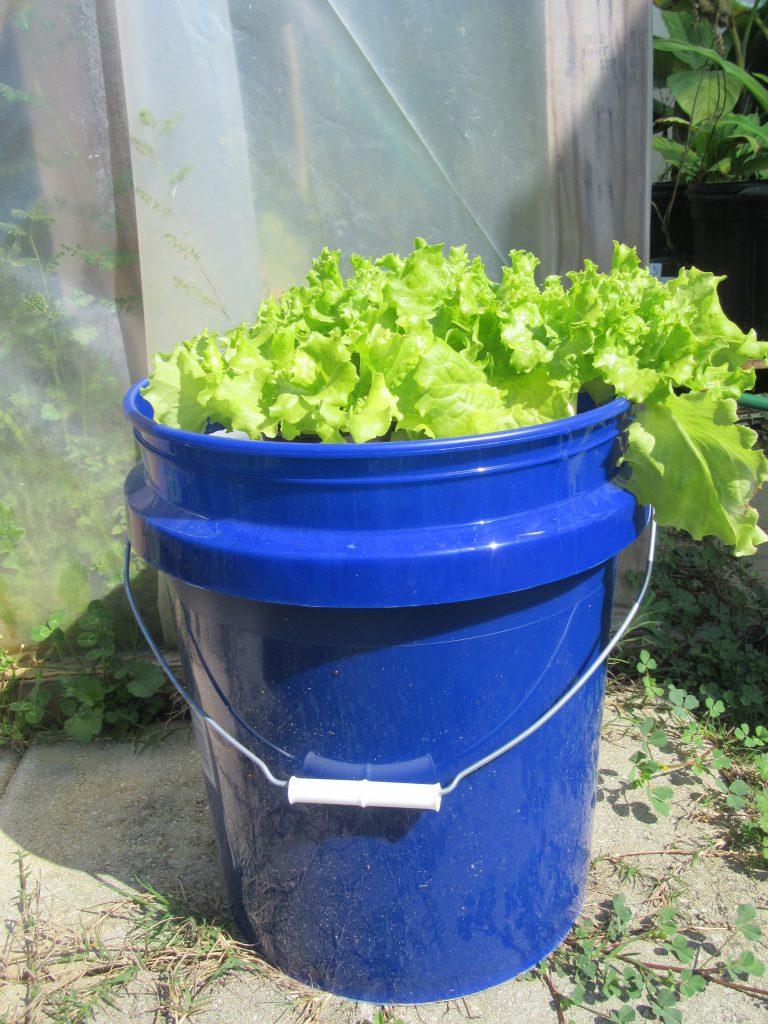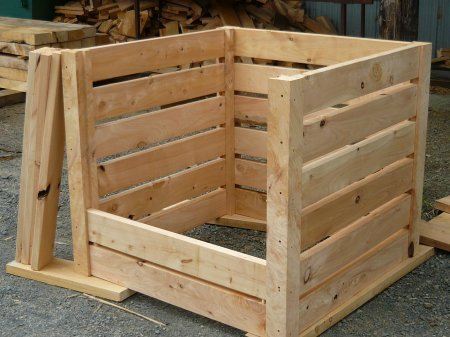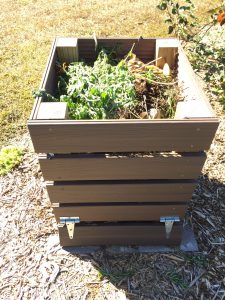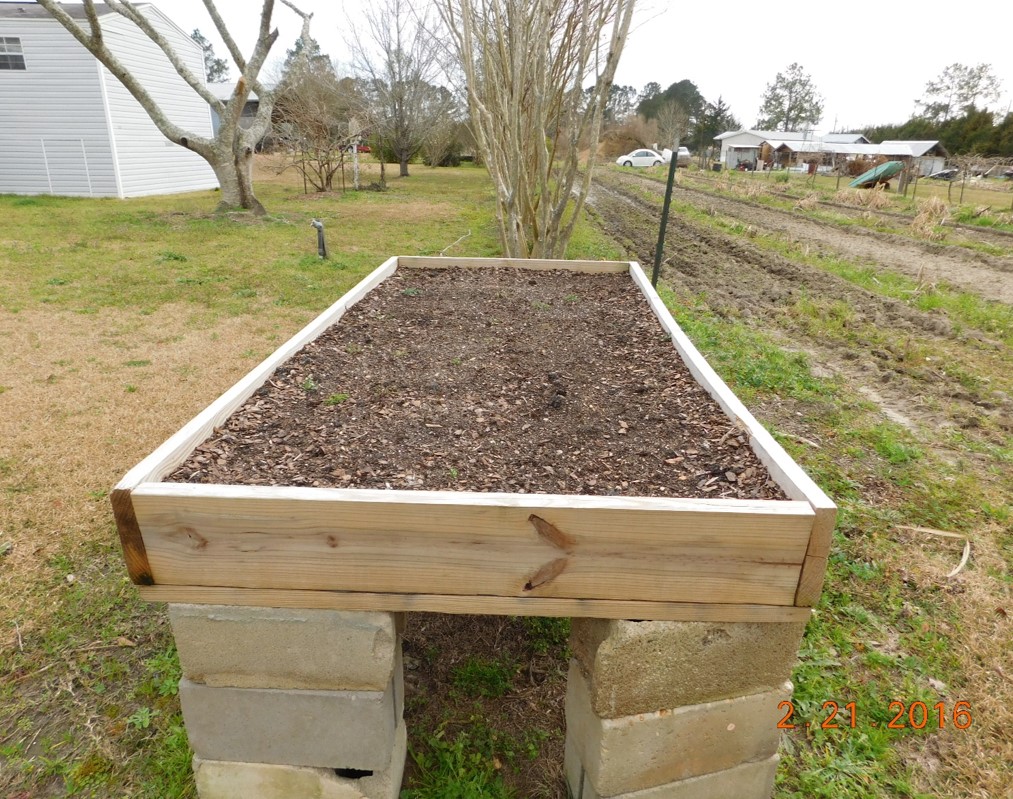by Molly Jameson | Jun 21, 2018

Mrs. Henry C. Mills in 1966 with her African violets at the North Florida Fair
flower show. Photo by Dan Stainer/State Archives of Florida.
Growing up, as soon as I entered the fair gates, I always headed straight for the rides. If I was lucky, I was able to get an unlimited pass strapped around my wrist and didn’t need to worry about rationing any tickets. Although I usually didn’t remember the names of particular rides – they were clear in my imagination. The spaceship, the circular mini roller coaster, the alien arms… and of course, the Ferris wheel. It wasn’t until I was about a dozen rides in – and starting to feel a little queasy – that the fun houses and win-a-goldfish-by-throwing-a-ring or shoot-a-basketball-for-a-giant-stuffed-tiger games drew my attention. After that, I was ready for funnel cake. Maybe even a corn dog and an assortment of fried cheese, pickles, and the like. Inevitably, I would eat too much and be out of commission for any more rides I was hoping to squeeze in – or squeeze into! This is when I might finally make my rounds through one or two of the giant warehouse-looking buildings that lined the way to the exits, where I knew there was at least a llama or a goat to be fed at the petting zoo.

Instead of simply attending the North Florida Fair this year, submit your garden’s best for competition. Photo by North Florida Fair.
But when I started volunteering at the Leon County Animal Shelter as part of the 4-H Pet Partners at age 12, I was introduced to these buildings in a whole new light. We were assigned the task of creating papier-mâché cats and dogs to display at the fair to help build awareness of pet overpopulation. I remember my dog well – he was beagle-like, with long droopy paper ears and stiff pointy legs that I struggled to keep balanced. The day we went to set up our display, my adrenaline soared, as I knew our creations were to be judged and ribbons to be bestowed. Ever since, I no longer view the fair buildings as a last stop – rather, I relish my stroll through each of them, as they contain so many handmade treasures, many of which are adorned with blue rosettes of triumph.
The tradition of displaying and competing for the best quality handiworks at the fair goes all the way back to the Middle Ages and Renaissance, where merchants sold and traded agricultural goods that had been grown over the summer and freshly harvested in the fall. Naturally, competitions arose during these times, as they strove for the finest products.
Today, fairs reflect the personality of an area, and nearly universally include judges who inspect home grown fruits and vegetables, flowers, preserved foods, and baked goods entered into competition by the community. The North Florida Fair awards about $80,000 in cash prizes to citizens who create and grow various items. Anyone living within the 24 counties that comprise North Florida – from the Suwannee, west to the Alabama line – is eligible to enter as many of the exhibit categories as they would like.

A youth showcasing his prize winning chicken at the North Florida Fair. Photo by Aly Donovan.
The exhibits are arranged into various departments, such as Home Agriculture, Capital City Garden Club Flower Show, Poultry, Baked Goods, and Fine Arts and Crafts. Within each department, there are various classes that are split into certain age divisions (i.e., youth only) or experience levels (i.e., amateur vs. professional). Under the Home Agriculture department there are 42 classes, including 13 classes covering fresh vegetables. The Capital City Garden Club Flower Show department has 13 classes, including annuals, perennials, hanging baskets, fruiting shrubs, trees, and vines, succulents, and much more. If you would like to submit something you’ve grown, now is the time to begin planning, as this year’s fair is set for November 8-18.
All of the details for each department and class can be found on the North Florida Fair website (http://northfloridafair.com/), under the Exhibitors tab. Pay close attention to the application and submittal deadlines for each specific category, as most items are due for judging the week prior to the fair opening.
So, let nostalgia win you over as you prepare your home-grown vegetables and flowers for submittal to the North Florida Fair. You might just earn a blue ribbon to be displayed for all fair attendees to admire, either as they walk off a full stomach in preparation for more rides, on their way to the exits, or just as they get started creating their own fond fair memories.
by Matt Lollar | Dec 14, 2017

Leaf lettuce growing in a floating hydroponic system. Photo Credit: University of Florida/IFAS Extension.
Christmas is just around the corner and what better gift could you give other than the gift that keeps on giving…a hydroponic bucket garden! Floating hydroponic gardens are easy to build with supplies found at just about any home and garden center. A simple garden can be constructed with a 5-Gallon bucket, polystyrene foam board insulation, and “net pots” or other suitable containers to support the plants. Leaf lettuce and herbs are suitable plants for growing in a floating garden and will grow well indoors as long as there is plenty of natural light available.
SUPPLIES
- 5-Gallon Bucket
- Polystyrene Foam (1½ inch or thicker)
- Water
- Water-Soluble Fertilizer (10-10-10, 20-20-20, 24-8-16, or similar grade)
- Epson Salts (magnesium sulfate)
- Suitable Plants (leafy lettuce, greens, or most herbs – NOT rosemary)
- “Net Pots”, Polystyrene Cups with punctures, or other suitable containers
- Jigsaw, Drywall Saw, or Sharp Knife
- Hole Saw
CONSTRUCTION
- Cut, with a jigsaw, a 1½ inch board of polystyrene foam board insulation into 1-by-1-foot squares.
- Place the bottom of the bucket on a 1-by-1 foot square of foam and trace the shape of the bucket on the foam. Cut out the circle.
- Use a hole saw to cut evenly spaced holes out of the foam. (Typically 3 to 4 depending on “net pot”/plant container size.) The hole size should allow the bottom of the plant container to be level with the underside of the foam.
FERTILIZATION & PLANT CARE
Fill the bucket with approximately 2.5 gallons of water. Add 1 to 2 teaspoons of water-soluble fertilizer for each gallon of water to be used in the bucket (approximately 5 to 9 teaspoons for 4.5 gallons of water). Add ½ to 1 teaspoon of Epson Salts for each gallon of water to be used in the bucket (approximately 2.5 to 4.5 teaspoons for 4.5 gallons of water). Mix the fertilizer and Epsom Salts with the water in the bucket. Continue to fill the bucket with water to within 1½ inches of the rim of the bucket. Set “net pots” or plant containers in the hole cutouts in the foam circle. Lay the foam circle, with inserted containers, on the surface of the water/fertilizer mixture in the bucket. Place the young starter plants in the containers. Do not remove the potting mix from the plant roots. The most critical aspect is the depth of the transplant’s root ball in the solution. The bottom of the root ball should be flush with the surface of the water. As the water/fertilizer mixture is taken up by the plants and evaporated, the water level in the bucket will decline.
FURTHER INFORMATION
A bucket garden may just be the beginning of your hydroponic ventures. For additional publications on growing hydroponic vegetables please visit the University of Florida/IFAS EDIS website hydroponic production page. If you want to start your own hydroponic farm then you may also be interested in attending the “Starting a Successful Hydroponic Business” training at the Suwannee Valley Agricultural Extension Center in Live Oak in March.

by Matthew Orwat | Nov 23, 2017
Happy Thanksgiving from your Gardening in the Panhandle Team !

image credit blogs.ifas.ufl.edu

by Ray Bodrey | Nov 20, 2017
Do you want to add a little something different to your landscape? How about something edible, as well as a focal point in your garden? Backyard sugarcane may be just what you are looking for.
Sugarcane, genus Saccharum, is a tropical perennial grass that thrives in humid environments across the southern United States. Based on physical and chemical characteristics, there are 3 types of sugarcane. Chewing canes (Yellow Gal, Georgia Red varieties) are soft, with fibers that stick together when chewed. Many of these canes are also used for syrup production. Crystal canes, used mainly for commercial purposes, contain a high percentage of sucrose. This is the molecule that crystalizes into granular sugar. Syrup canes (Louisiana Ribbon, Green German varieties) contain less sucrose, therefore less crystallization, making for a more fluid product. Some varieties of each type are interchangeable. For example, some crystal canes are satisfactory for chewing cane.

Figure 1: Sugarcane Harvest. Credit: UF/IFAS Communications.
How does one plant sugarcane? Sugarcane is propagated by “seed cane”. Mature cane stalks have nodes, about every 6 inches, that produce buds. The stalks are cut into 2-3 foot segments and then planted. After the following harvest, the sugarcane sprouts from the buds of the old stalks, through a process known as “ratooning”. Be patient when growing sugarcane. It takes approximately 12-14 months for the original planting (seed cane) to produce mature cane, while another year to produce cane from the ratoon.
Seed cane should be planted from mid-August through November. Growth will occur in the spring. Sugarcane can be planted, 4 -10 feet apart, as a single row or multiple rows. A 3-7-inch furrow depth is optimum. Common practice regarding fertilizer is to apply 1 pound of 8-8-8 fertilizer per 10 feet of furrow. Plan ahead, as this crop makes a great windbreak for your vegetable garden.
Avoid planting sugarcane in areas of high traffic. The leaves of the cane are very sharp and some sugarcane varieties can fall and obstruct areas. Well drained soils in a sunny area is the perfect environment. Times of stress, such as lower temperatures for long periods of time, poor soil fertility and pH extremes (best range 5.5-6.5) will cause lower yields. Heavy watering with poor drainage conditions of newly planted seed cane can also disrupt bud germination.
Overtime, many varieties will succumb to disease and other environmental factors. To manage sugarcane against weeds, hand weeding and mulching are the best options. Soil inhabiting worms and grubs, stalk borers, termites and aphids are the biggest threats regarding insect pests. Sugarcane is rapidly growing plant and can tolerate most insect infestations and be productive.
Sugarcane is unique as many of the heirloom varieties are still available. So, where does one find seed cane? The classified ads section of the “Market Bulletin” published by the Florida Department of Agriculture and Consumer Services is a good start:
The Panhandle provides a favorable growing environment for this delightful backyard gardening focal point plant. Contact your local county extension office for more information.
Information for this article is from the UF/IFAS EDIS publication: “Backyard Sugarcane” by L. Baucum, R.W. Rice, and L. Muralles.
UF/IFAS Extension is an Equal Opportunity Institution.

by Carrie Stevenson | Nov 6, 2017

A wooden bin is easy to use for composting kitchen and yard waste. Photo credit: Carrie Stevenson
Fall is the time of year many of us spend countless hours raking leaves and pine straw, piling them up, watching kids jump into the piles (then re-raking!), and bagging them up for disposal. However, what you may not have considered is that all of those materials are ideal fertilizer for your lawn and garden.
Composting is an excellent way to recycle yard waste, and now that leaves are dropping, you’ve got plenty of material to recycle. Vegetable gardens and landscapes alike can benefit from a generous dose of compost now and then. A free source of much-needed nutrients in our often nutrient-poor sandy soil, organic-rich compost also loosens tight, compacted soils and helps them hold nutrients and water.
So what is compost? Basically, compost is what’s left of organic matter after microbes have thoroughly decomposed it. Among the compostable organic materials available to most homeowners are leaves, grass clippings, twigs, chopped brush, straw, sawdust, vegetable plants, culled vegetables from the garden, fruit and vegetable peelings and coffee grounds (including the paper filter) from the kitchen. Don’t add table scraps with meats or oils to your compost pile—meats especially will attract animals. Contrary to popular opinion, compost piles don’t typically smell—but if you do have an odor come from decomposing vegetables, turning the compost pile and adding dirt, grass clippings or leaves will eliminate any smell.
The organisms that do the actual composting are bacteria and fungi are microscopic, although you will also find worms and arthropods in a good compost bin. A number of companies sell “composting microbes,” but you don’t need them. Fortunately, plenty of these microbes are around already. To get started, just mix a few scoops of garden soil or compost from a previous batch into the compost pile will provide all the microbes you need to start the process. The microbes just need water, oxygen and nutrients to grow and multiply.
Rainfall will provide most of the needed moisture. You may need to hand water the pile on occasion, too, during dry times. For best results, keep the pile moist but not soggy; if you pick up a handful it should not crumble away nor drip water when squeezed. The right mix of organic matter can provide all the nutrients needed. Alternate using brown (leaves, straw) and green materials (grass clippings, vegetables) in your compost bin to provide the needed amounts of carbon and nitrogen. If the pile seems to be decomposing too slowly, raise the nitrogen level by adding a few more green materials or a handful of granular fertilizer. And the more you turn the pile, the faster it will decompose.
There are many ways to contain your composting materials, from a simple pile to a solar-heated, rotating bin and everything in between. For more information on composting and compost bin options, please see this University of Florida Extension article.

by Daniel J. Leonard | Oct 10, 2017
I had to do a hard thing last week. My battle-worn okra, eggplant and pepper plants that had produced so reliably since June and endured all the summertime challenges (heat, insects, disease, and a hurricane to name a few) were finally pulled out of my raised bed garden and discarded. A combination of lowered yields, increased insect pressure, and the fact that one can only eat so much okra in a calendar year sealed their fate.
However, before planting our cool-season veggie favorites, like those tender leafy greens and wonderfully crunchy carrots, there are a few things to do to get our raised beds in shape to give maximum yield performance and make growing a little easier.

Replenish the Soil
One of the main benefits of raised beds is the ability to grow in near-perfect soil conditions. If I was relegated to gardening in my yard’s less than ideal native sandy soil, I might have given up altogether by now and I suspect many of you would be in the same boat. Raised beds totally alleviate this problem and give gardeners the opportunity to grow in rich, fertile soil composed of your favorite homemade soil mixture (mine is two parts mushroom compost to one part aged pine bark) or commercial potting mix/compost. However, at the end of each growing season, you will notice you have a bit less soil in your beds than you did at the beginning. While frustrating, this is a natural process for soils rich in organic material – they naturally break down and decompose! So to give your veggies’ roots the maximum amount of growing space for the coming season, top off your beds with a quality soil/compost mix and till it in before sowing seed or setting out transplants.
Eliminate Competing Roots
If you have a mature tree anywhere near your raised bed garden, you are going to be in for a surprise when you till that new compost in! It turns out that tree roots like that rich, fertile raised bed soil just as much as vegetables do and will seek it out. It is not uncommon for mature trees to have root systems that stretch horizontally two to three times the height of the tree, meaning a 50’ oak tree could have roots growing well over a hundred feet away from its trunk! Therefore, unless you have a totally tree-free property, battling tree roots in your beds will be an ongoing issue. For instance, each fall, when I transition from warm season to cool season crops, I find that my neighbor’s Laurel Oak has filled all three of my raised beds full of feeder roots glad to be free of the infertile sand. This is a problem because those roots suck up vital water and nutrients meant for my vegetable crops, robbing them of reaching their full potential. It is good practice to thoroughly till your beds’ soil and remove as many of the competing roots as you can. Doing so will give your new plants a head start on becoming established before the competition returns.
Depleted soil and competition from tree roots are two of the biggest threats to your raised bed’s performance. By planning ahead and accounting for both of these things prior to planting your fall garden, you will be more likely to reap a larger yields when harvest time comes! For more information on raised bed vegetable gardening and other horticultural questions, contact your local UF/IFAS Extension Office. Happy fall gardening!









